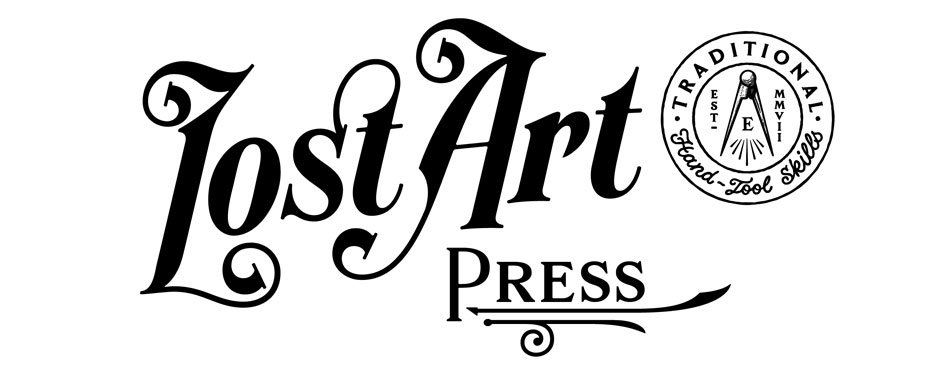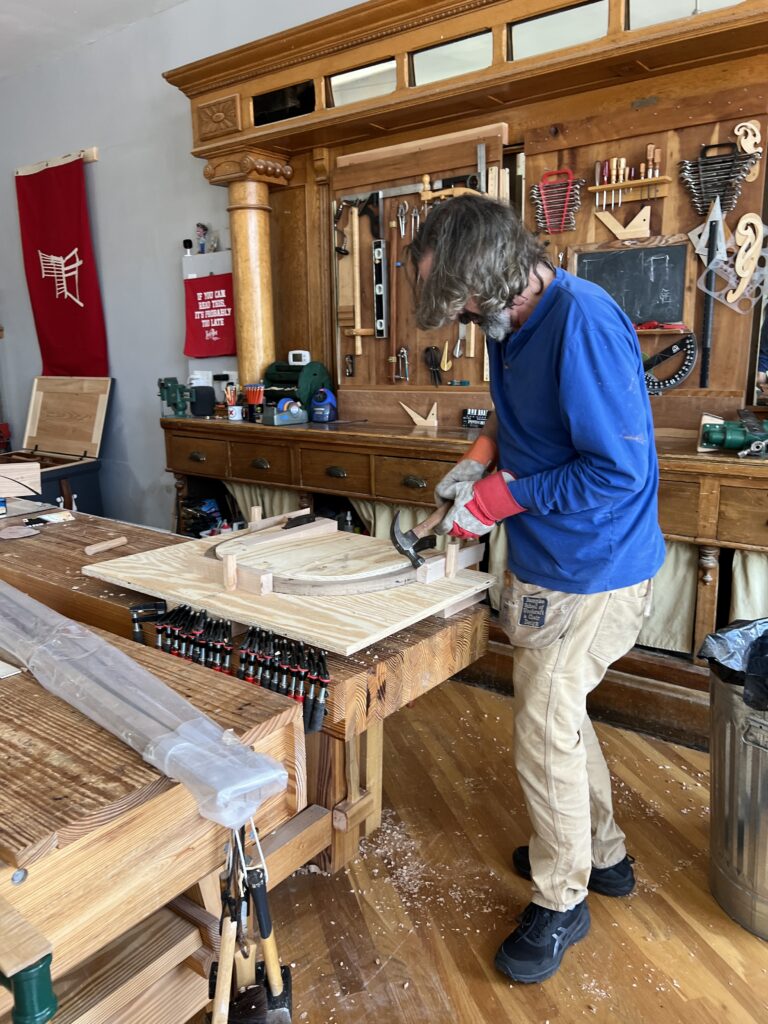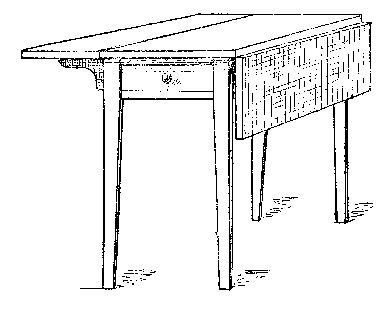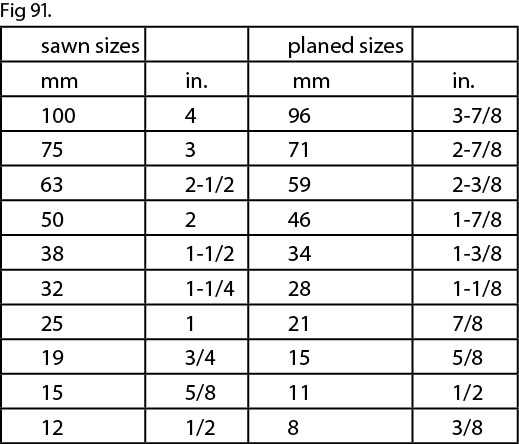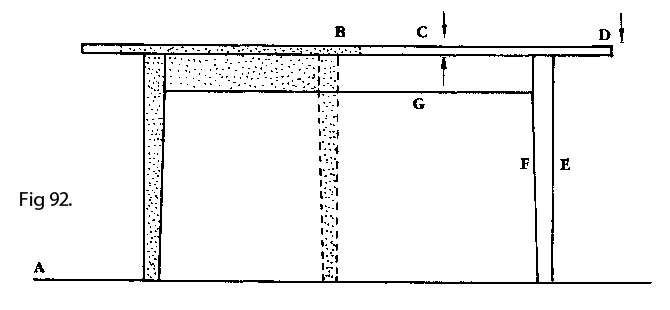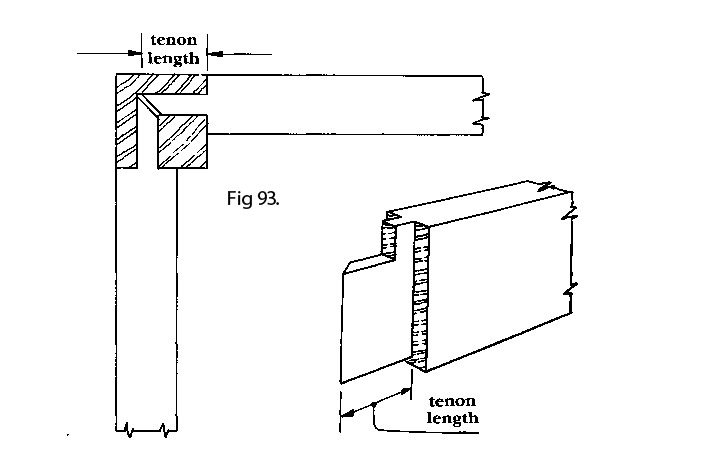
Editor’s note: Our Mind Upon Mind series is a nod to a 1937 Chips from the Chisel column (also featured in “Honest Labour: The Charles H. Hayward Years”), in which Hayward wrote, “The influence of mind upon mind is extraordinary.” The idea being there’s often room for improvement. To that end, we’ve asked you what else you have thought of, tried out and improved upon after building projects from our books. To submit your own idea, email kara@lostartpress.com. You can read more about the submission process here.
Today’s pick is from Nick Stanchenko. Thanks, Nick!
— Kara Gebhart Uhl
After a few chairs, I decided I was ready to try the armbow miters, as illustrated — but not really explained — in “The Stick Chair Book.” (Turns out, I wasn’t quite ready.)
The first challenge was getting the angles to match. This is easy with a router and a dovetail bit, but unfortunately I had sold my router a year ago to focus more on hand tools. After a bit of head scratching, here’s what I came up with:

Clamp the two parts together, draw an angled line using a bevel gauge and cut in one go.
This kind of worked, but wasn’t super accurate. The saw tends to pivot a little after the top part is cut through. Oh well. Time for another approach:
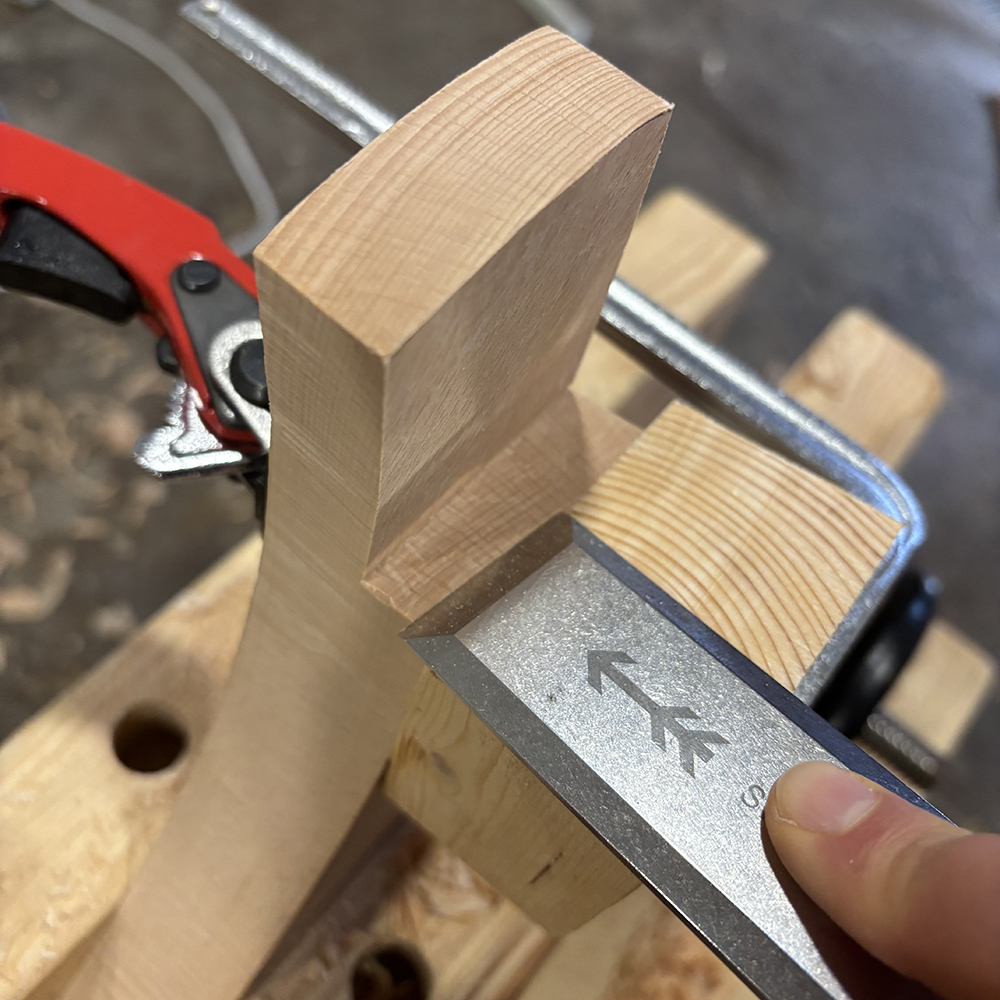
Make an angled block. Then clamp it to each of the mating parts and refine them with a wide chisel. (The lap joint itself was cut with a saw and flattened with a router plane.)
This time, I had a perfect match and rushed to glue up. Bad idea! Glue gathers in the sharp corner and prevents the parts from coming together tightly. In fact, the whole assembly slides around as you try to clamp it. It was devastating, but obvious in hindsight.
I removed the clamps, let the glue dry, scraped it off and trued all the surfaces again. Now what?
“Pinch dogs” would have been a great solution to hold the joint in place. But I couldn’t remember what they were called, and I don’t think they are sold where I live anyway.
Here’s another method to keep the parts from moving: Pin them!

I found a regular pin more or less satisfactory, although you can also drawbore it (i.e. offset the holes by a tiny amount) to pull the joint together more tightly.
Now the glue-up:

Much better.
Finally, I present to you the resulting joint after a bit of clean-up with a spokeshave, a rasp and a card scraper. (OK, it’s the best of the four I’ve made so far.)

The cool part is that a stick will go through where the pin is, so there will be no trace of it left. Well, it does not really matter, but it feels nice.
Good luck!
— Nick Stanchenko
p.s. Needless to say, pinning will also help with non-mitered lap joints.
